Related Research Articles

The House of Bourbon is a European dynasty of French origin, a branch of the Capetian dynasty, the royal House of France. Bourbon kings first ruled France and Navarre in the 16th century. By the 18th century, members of the Spanish Bourbon dynasty held thrones in Spain, Naples, Sicily, and Parma. Spain and Luxembourg have monarchs of the House of Bourbon.

Charles d'Albert, Duke of Luynes was a French courtier and a favourite of Louis XIII. In 1619, the king made him Duke of Luynes and a Peer of France, and in 1621, Constable of France. Luynes died of scarlet fever near the end of that year at the height of his influence.

This section of the Timeline of Quebec history concerns the events between the foundation of Quebec and establishment of the Sovereign Council.
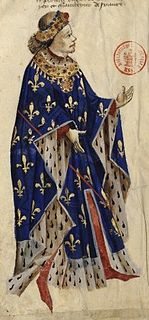
Louis I, called the Lame was a French prince du sang, Count of Clermont-en-Beauvaisis and La Marche and the first Duke of Bourbon, as well as briefly the titular King of Thessalonica from 1320 to 1321.
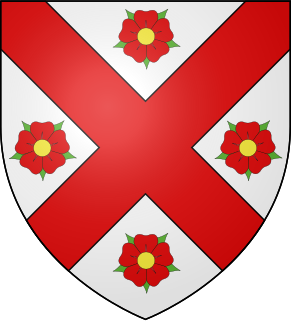
The Earl or Mormaer of Lennox was the ruler of the district of the Lennox in western Scotland.

Baron de Longueuil is a title of French nobility that was granted originally by King Louis XIV of France to a Norman military officer, Charles le Moyne de Longueuil. Its continuing recognition since the cession of Canada by France to Britain is based on the Treaty of Paris (1763), which reserved to those of French descent all rights which they had enjoyed before the cession.

The Château de Talcy is a historical building in Talcy, Loir-et-Cher, France. It lies to the north of the river Loire, in the Loire Valley, known for its 16th-century châteaux. From a fortification in existence in the 13th Century additional wings were added in the 1620s. Modernised in the 18th Century the interiors have been preserved. A Historical Monument first registered in 1906 it has been owned by the state since 1933. It is open to visitors.
Christopher Plunket, 2nd Earl of Fingall and 11th Baron Killeen was an Irish politician and soldier. In 1641 he negotiated with the rebels on behalf of the Old English of the Pale and pushed them to join the rebellion. He fought for the rebels at the siege of Drogheda. He joined the Confederates and fought in their Leinster army, notably at Dungan's Hill. When the Confederates fused into the Royalist Alliance, he fought under James Butler, 1st Duke of Ormond in the Battle of Rathmines where he was wounded and taken prisoner. He died of his wounds two weeks later in captivity at Dublin Castle.
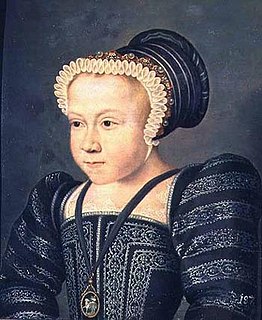
Marie Elisabeth of France was a French princess and member of the House of Valois. She was the only child of King Charles IX of France and Elisabeth of Austria.
Sir Ralph Gore, 2nd Baronet was an Anglo-Irish politician, soldier and baronet.

Barnabas O'Brien, 6th Earl of Thomond, son of Donogh O'Brien, 4th Earl of Thomond; succeeded his brother as earl, 1639; was lord-lieutenant of Clare, 1640–41: had his rents seized, 1644; admitted a parliamentary garrison to Bunratty Castle and went to England: joined Charles I; successfully petitioned parliament for £2,000 spent in the parliamentary cause.

Henry O'Brien, 5th Earl of ThomondPC (Ire) (1588–1639), styled Lord Ibrickane until 1624, was summoned to the House of Lords of the Irish Parliament of 1613–1615.
Dermod McMurrough O'Brien, 5th Baron Inchiquin was an Irish baron.
Sir Valentine Browne, 1st Viscount Kenmare and 3rd Baronet Browne of Molahiffe (1638–1694), was a Jacobite who fought for James II of England in the Williamite War in Ireland.
Forcade (de), also written Fourcade (de), Forcada (de), Forquade (de), Forquada (de), Forcade , Fourcade , Laforcade (de) and Lafourcade (de) belongs to the nobility of Guyenne and Gascony, in France, and of the Kingdom of Prussia. The family traces its roots to Béarn and the Kingdom of Navarre.
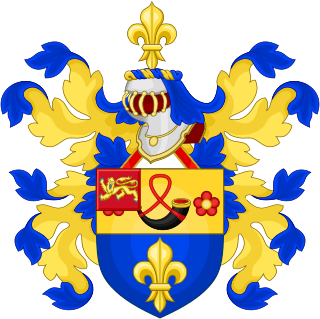
The Rubens family is a Flemish noble family that lived in Antwerp.
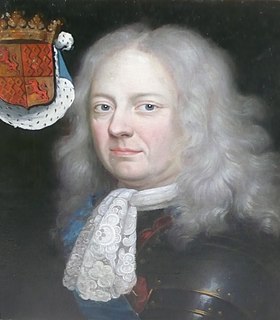
Louis-Charles d'Albert de Luynes, 2nd Duke of Luynes, was a French nobleman and peer of France. He was a translator and moralist who was the first translator of the work of René Descartes.

Charles MacCarthy, 1st Viscount of Muskerry, also called Cormac Oge, opposed Strafford, Charles I's authoritarian chief governor of Ireland, and in 1641 contributed to Strafford's demise by submitting grievances at Westminster.
Louis Joseph d'Albert de Luynes von Grimberghen was a French nobleman who was in the service of the Emperor Charles VII, and became field-marshal and Ambassador in France.

Cormac MacDermot MacCarthy, 16th Lord of Muskerry (1552–1616) was an Irish magnate and soldier. He fought at the Siege of Kinsale during Tyrone's Rebellion.
References
- ↑ John J. Silke, "The Irish Abroad, 1534–1691" in A New History of Ireland, vol. III (1991) p. 613.
- 1 2 Jean Charles Joseph de Vegiano, seigneur d'Hovel, Suite du Supplément au Nobiliare des Pays-Bas et du comté de Bourgogne (1779) p. 223.
- ↑ G.E.C., The Complete Peerage , vol. IV (1892) p. 29.
- ↑ G.E.C., ed. Vicary Gibbs and H. Arthur Doubleday, The Complete Peerage, vol. III (1913) p. 633.
- ↑ John D'Alton, King James's Irish Army List, vol. II (1861) p. 413.